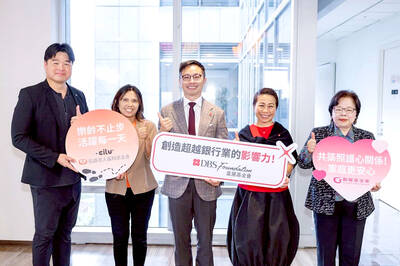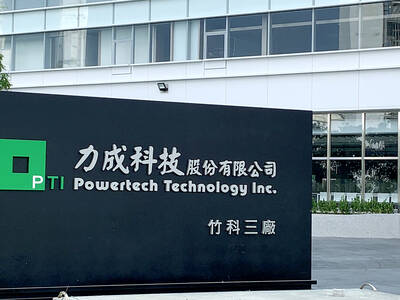The Bluetooth Special Interest Group (SIG) will offer Bluetooth low- energy technology standards for mobile phones and consumer devices next spring, the association said in Taipei yesterday.
“Analysts expect Bluetooth low-energy technology to be integrated in a majority of mobile phones over the next five years, translating into 100 million mobile phones next year with an attach rate of 8 percent for complementary products,” Derek Soh (蘇國良), a marketing director for the Bluetooth SIG for Asia-Pacific and Japan, told a media briefing.
The efficiency of a new low- energy standard, as opposed to proprietary standards, will allow users to run Bluetooth on a button cell battery such as the CR2025 lithium coin battery for up to one year, Soh said.
The non-profit association said initial applications would include sports and fitness, watches or wrist devices and remote control.
The low-energy digital radio technology runs on media access control/physical layers (MAC/PHY), and does not include the whole spectrum offered by WiFi.
Bluetooth low-energy technology was developed by the Nokia Research Center under the code name Wibree, which was later merged with the Bluetooth SIG.
Currently, the top three markets for Bluetooth technology application are headphones, gaming and handsets in order of ranking.
The group has close to 12,000 members and more than 2 billion devices in the market. Members in the Asia-Pacific region last year included China, Taiwan and South Korea.

The DBS Foundation yesterday announced the launch of two flagship programs, “Silver Motion” and “Happier Caregiver, Healthier Seniors,” in partnership with CCILU Ltd, Hondao Senior Citizens’ Welfare Foundation and the Garden of Hope Foundation to help Taiwan face the challenges of a rapidly aging population. The foundation said it would invest S$4.91 million (US$3.8 million) over three years to foster inclusion and resilience in an aging society. “Aging may bring challenges, but it also brings opportunities. With many Asian markets rapidly becoming super-aged, the DBS Foundation is working with a regional ecosystem of like-minded partners across the private, public and people sectors

BREAKTHROUGH TECH: Powertech expects its fan-out PLP system to become mainstream, saying it can offer three-times greater production throughput Chip packaging service provider Powertech Technology Inc (力成科技) plans to more than double its capital expenditures next year to more than NT$40 billion (US$1.31 billion) as demand for its new panel-level packaging (PLP) technology, primarily used in chips for artificial intelligence (AI) applications, has greatly exceeded what it can supply. A significant portion of the budget, about US$1 billion, would be earmarked for fan-out PLP technology, Powertech told investors yesterday. Its heavy investment in fan-out PLP technology over the past 10 years is expected to bear fruit in 2027 after the technology enters volume production, it said, adding that the tech would

YEAR-END BOOST: The holiday shopping season in the US and Europe, combined with rising demand for AI applications, is expected to drive exports to a new high, the NDC said Taiwan’s business climate monitor improved last month, transitioning from steady growth for the first time in five months, as robust global demand for artificial intelligence (AI) products and new iPhone shipments boosted exports and corporate sales, the National Development Council (NDC) said yesterday. The council uses a five-color system to measure the nation’s economic state, with “green” indicating steady growth, “red” suggesting a boom and “blue” reflecting a recession. “Yellow-red” and “yellow-blue” suggest a transition to a stronger or weaker condition. The total score of the monitor’s composite index rose to 35 points from a revised 31 in August, ending a four-month

RUN IT BACK: A succesful first project working with hyperscalers to design chips encouraged MediaTek to start a second project, aiming to hit stride in 2028 MediaTek Inc (聯發科), the world’s biggest smartphone chip supplier, yesterday said it is engaging a second hyperscaler to help design artificial intelligence (AI) accelerators used in data centers following a similar project expected to generate revenue streams soon. The first AI accelerator project is to bring in US$1 billion revenue next year and several billion US dollars more in 2027, MediaTek chief executive officer Rick Tsai (蔡力行) told a virtual investor conference yesterday. The second AI accelerator project is expected to contribute to revenue beginning in 2028, Tsai said. MediaTek yesterday raised its revenue forecast for the global AI accelerator used